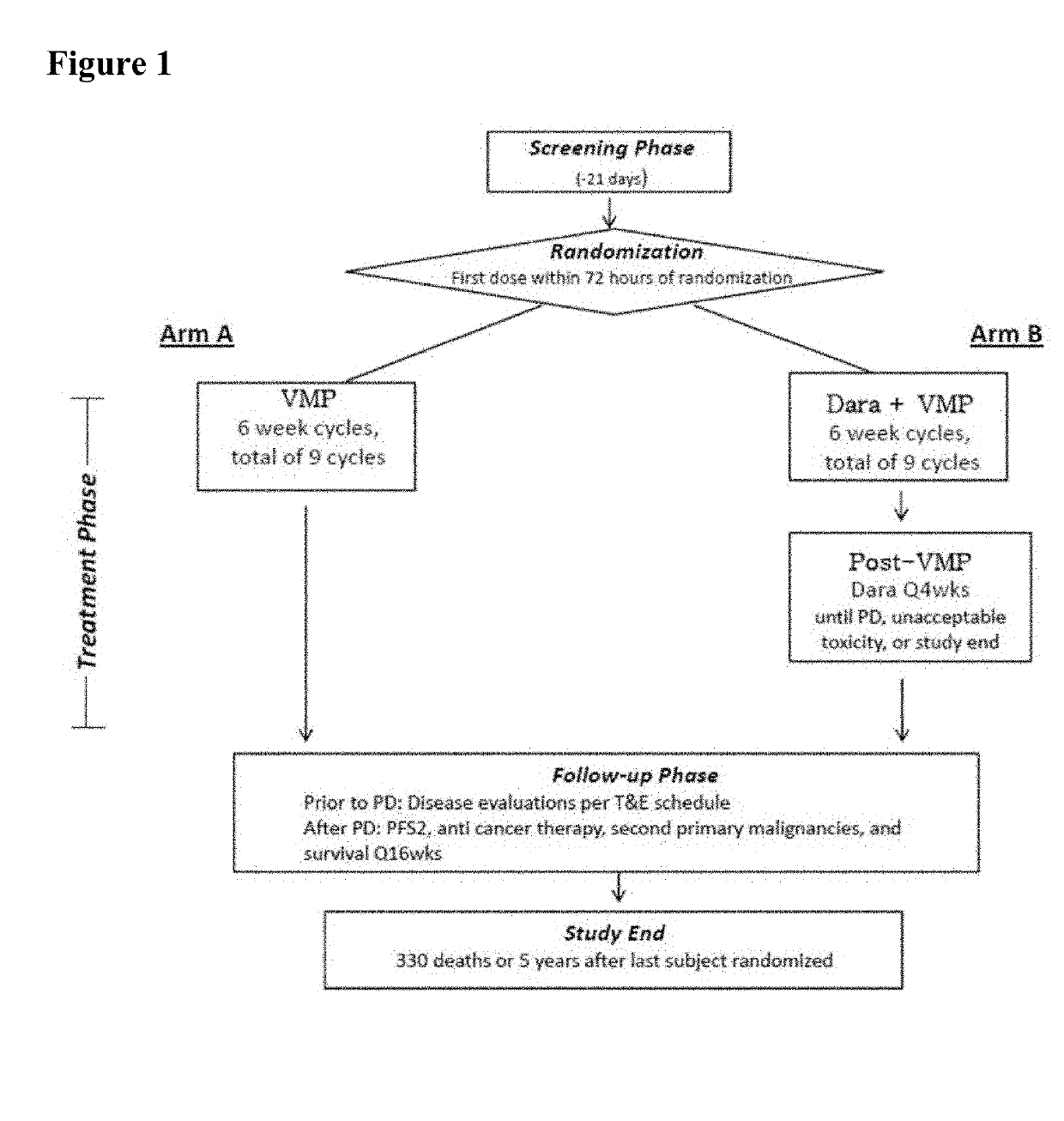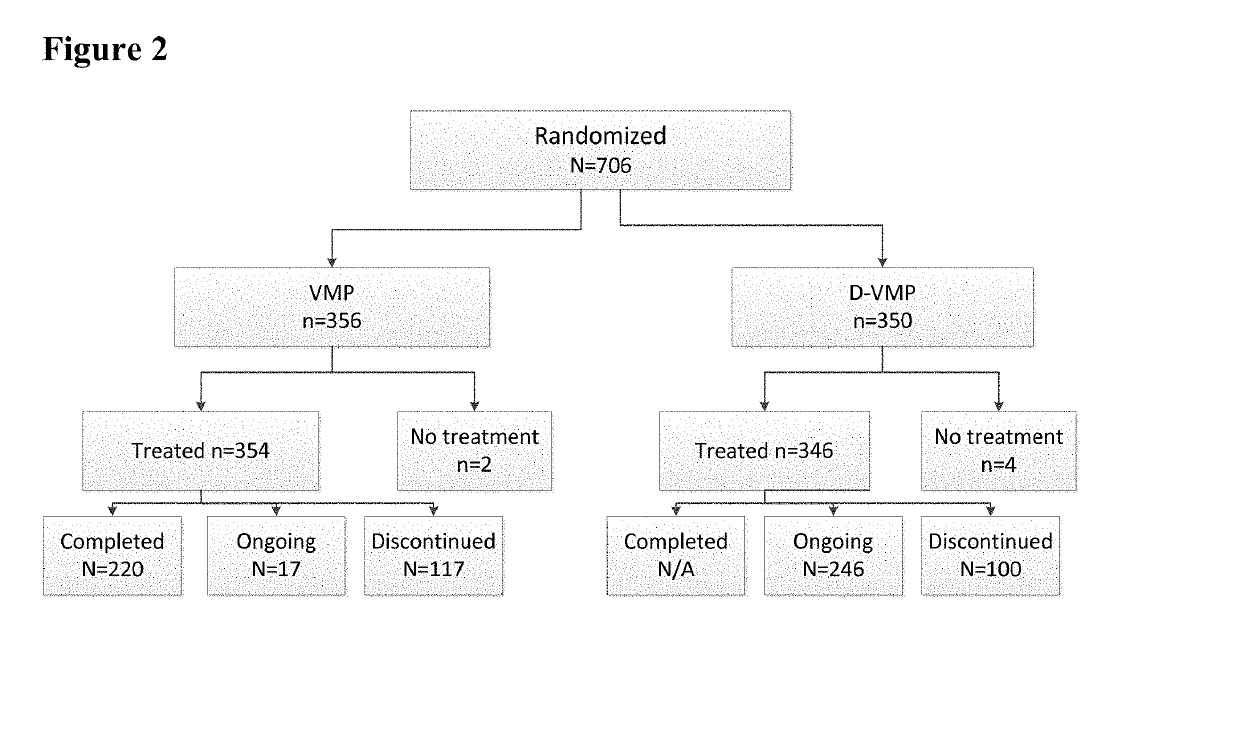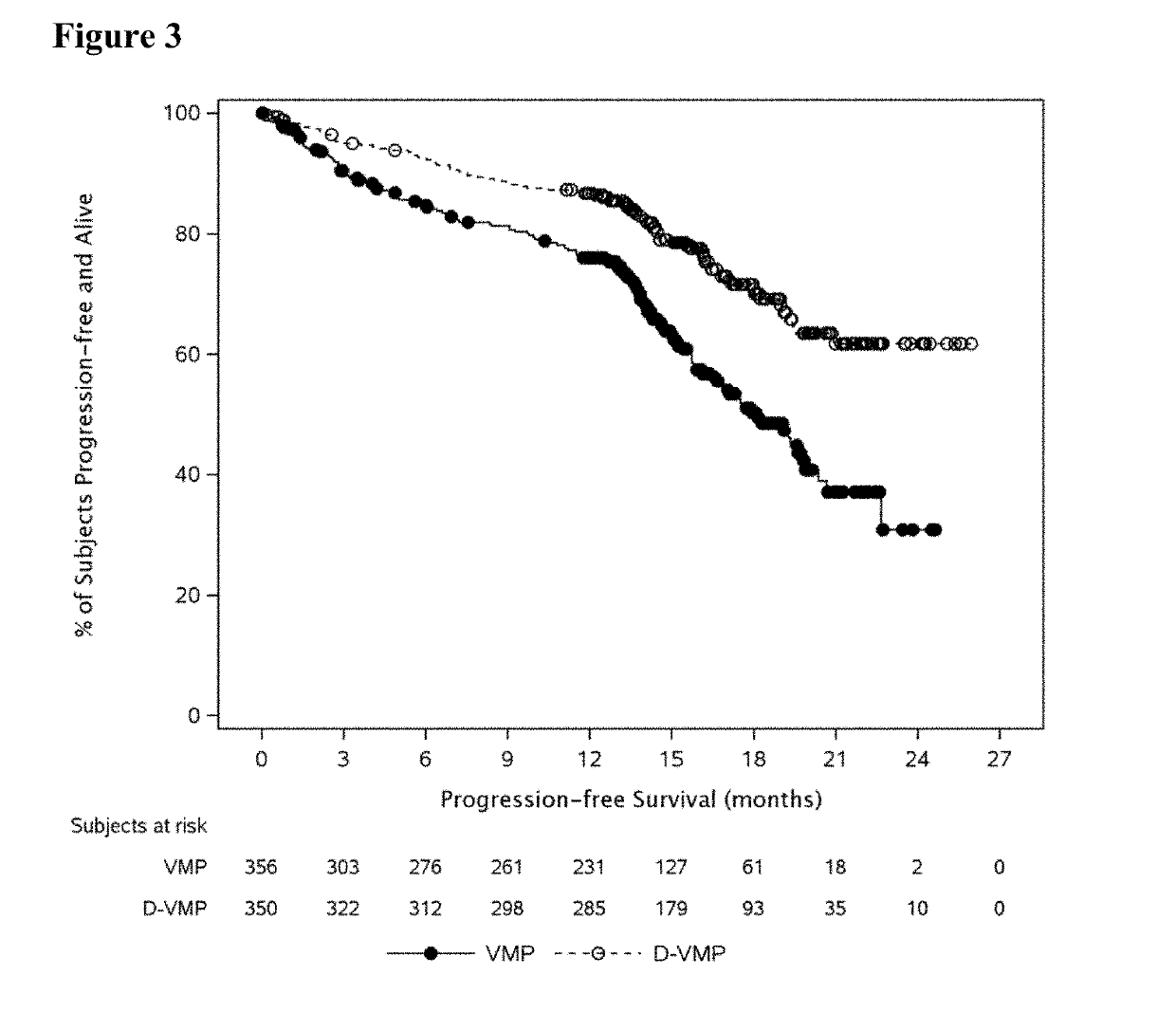Methods of Treating Multiple Myeloma
- Summary
- Abstract
- Description
- Claims
- Application Information
AI Technical Summary
Benefits of technology
Problems solved by technology
Method used
Image
Examples
example 1
[0121]Clinical pharmacology information provided herein focuses on data from subjects with evaluable pharmacokinetic data treated with D-VMP in the Phase 3 Study (n=342), and supportive information derived from the Phase 1b Study in the cohort of subjects treated with D-VMP having evaluable pharmacokinetic data (n=11). In addition, an updated population pharmacokinetics (PPK) analysis including data from the Phase 3 and Phase 1b Studies and exposure-response (efficacy and safety) analyses including data from Phase 3 Study were conducted.
[0122]1-1 Pharmacokinetics
[0123]The absorption, distribution, metabolism and excretion characteristics of daratumumab are based on analysis of full pharmacokinetic profiles available for monotherapy dosing. In general, daratumumab serum concentrations in the Phase 3 Study appeared comparable to those observed in prior studies, and the combination of daratumumab with background VMP therapy does not appear to alter the pharmacokinetic profi...
example 2
[0142]For the purpose of the present disclosure, the efficacy of daratumumab in combination with VMP in patients with newly diagnosed multiple myeloma considered ineligible for transplant is primarily based on results from the Phase 3 Study. Efficacy analyses were primarily based on the intent-to-treat (ITT) analysis population, comprised of the 706 subjects who were randomly assigned to study treatment with D-VMP (350 subjects) or VMP (356 subjects). At the time of clinical cut-off, the median overall follow-up was 16.5 months.
[0143]2-1. Subject Disposition
[0144]As of the clinical cut-off date, 706 subjects from 162 centers in 25 countries were randomized into the Phase 3 Study.
[0145]An overview of the subject disposition for the Phase 3 Study is shown in FIG. 2. At the time of the clinical cut-off, 80% of subjects in the D-VMP group and 62% of subjects in the VMP group had completed all 9 protocol-specified cycles of VMP treatment. During the first 9 cycles, 19% of subjects in the...
example 3
[0180]The safety population for the Phase 3 Study consisted of data from 700 subjects (346 subjects received D-VMP; 354 subjects received VMP). In both treatment groups, VMP was to be administered for the first 9 cycles of treatment and then stopped, as per the VELCADE prescribing information (VELCADE® [Prescribing Information] 2017; VELCADE® [Summary of Product Characteristics] 2014). In the D-VMP group, daratumumab administration continued for the entire treatment period (ie, post Cycle 9), while subjects in the VMP group entered the Follow-up phase with no VMP treatment after Cycle 9. Thus, there is a potential for bias with respect to reporting AEs in the D-VMP group due to a longer exposure. The safety population includes all subjects who received at least 1 dose of study treatment.
[0181]3-1 Exposure to Treatment
[0182]At the time of clinical cut-off, subjects in the D-VMP group received a median of 12 treatment cycles while subjects in the VMP group received a median of 9 treat...
PUM
| Property | Measurement | Unit |
|---|---|---|
| Fraction | aaaaa | aaaaa |
| Fraction | aaaaa | aaaaa |
| Fraction | aaaaa | aaaaa |
Abstract
Description
Claims
Application Information
 Login to View More
Login to View More - R&D
- Intellectual Property
- Life Sciences
- Materials
- Tech Scout
- Unparalleled Data Quality
- Higher Quality Content
- 60% Fewer Hallucinations
Browse by: Latest US Patents, China's latest patents, Technical Efficacy Thesaurus, Application Domain, Technology Topic, Popular Technical Reports.
© 2025 PatSnap. All rights reserved.Legal|Privacy policy|Modern Slavery Act Transparency Statement|Sitemap|About US| Contact US: help@patsnap.com



